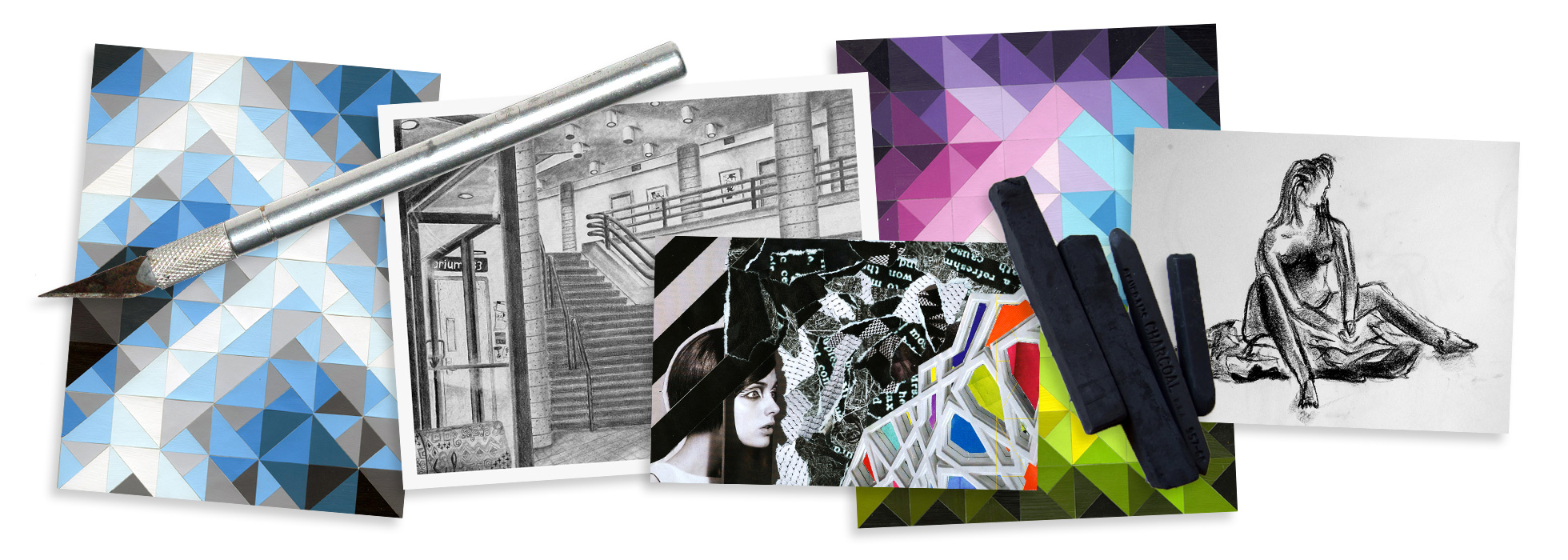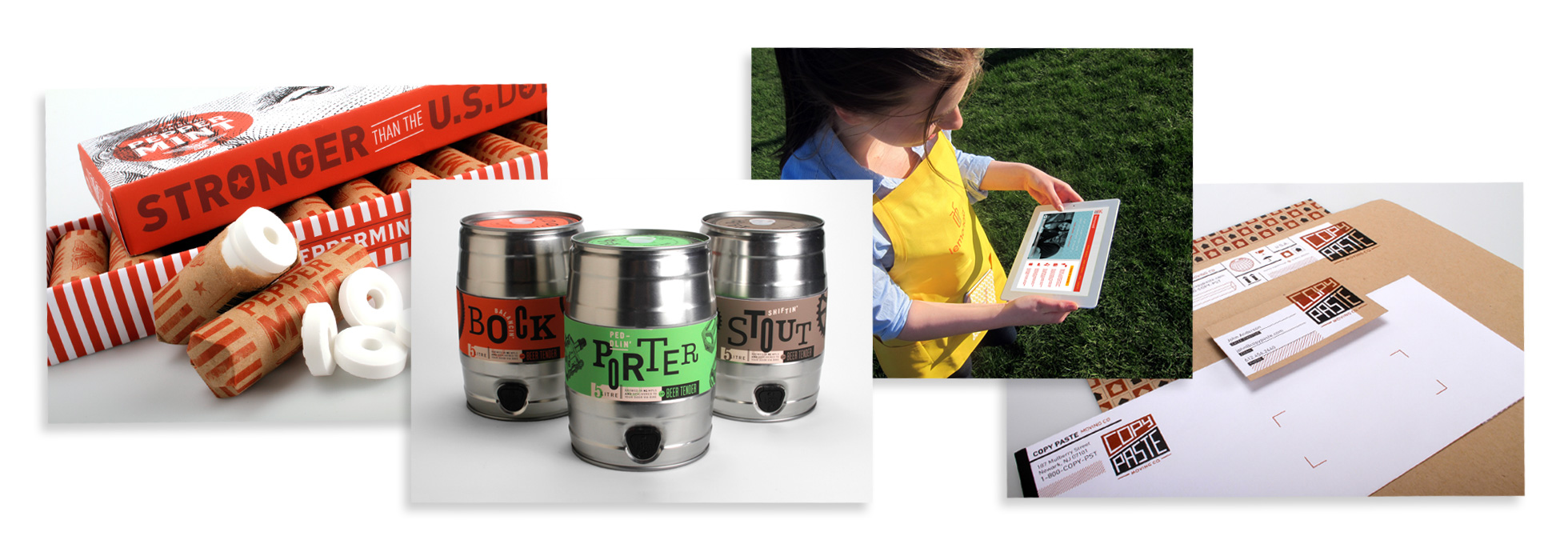Design School Survival Guide
When you first start a design program, you’ll likely receive a document called “the four-year plan.” It’s basically a list of every class you need to graduate on time. What they don’t tell you is what I’m about to write about below. To be a great designer, you need to be involved in design outside of the classroom. This is a list of the things I learned while attending the University of Minnesota’s College of Design. If you’re just starting out with design, I hope this helps! – I know it would have helped me.
Freshman year

Survive your foundation courses
Color class will make you want to run away from design and never look back. Just relax, cut your triangles, and know that things can only get better. There will be sleepless nights, but it will all be worth it in the end.
Explore the city
Regardless of where you’re attending school, take some time to get to know who’s in town. Who are the big players? The up-and-comers? The big thinkers? Knowing what’s out there will help guide your own design and give you something to aspire to.
Get a Twitter account
Twitter is huge in the design and advertising world. Everyone has a twitter and anyone can follow anyone. That means you can track down your favorite designer and follow them without being a total creeper. Checking the latest tweets will keep you up to date with what going on in town.
Sophomore year

Get a job
Not at Starbucks. Although working at Starbucks is totally respectable, you should really try to find a job that relates to your career goals. It’s easier than you might think. There are literally hundreds of great part-time and well-paid design jobs on most campuses. Every department needs a designer to create collateral, update their website, or help with communications. Most schools have a career center or online job board just for students. Also, don’t forget to check out student-run publications, magazines, and newspapers on campus.
Don’t stress out about portfolio review
If you’ve kept up with your classes and have been working hard, you’ll be a-ok. That said, do take it seriously and come prepared – not everyone gets in.
Take a career planning class
Although taking a class about careers and resumes your sophomore year might not seem to make sense, it does two things for you: 1) even if you don’t yet have a full resume, the class will make you consider what you need to accomplish in the next two years; 2) learning how to act in interviews and professional situations will open up a lot of doors and give you confidence that will set you apart. You’ll leave with a professional resume, mock interview experience, and general networking savvy.
Join the mentor program
Not all schools have a mentor program, so be sure to take advantage if your school offers one. If you join, you’ll be linked up with a professional designer who you’ll get to meet with once a month. You’ll get great feedback from a professional, you’ll get to visit their place of work, and you’ll make an awesome connection.
Go to design conferences
Design conferences are a great opportunity to meet professional designers outside of the classroom. They’re also really interesting and you’re guaranteed to leave feeling inspired. If you’re not convinced, watch this awesome talk by designer Aaron Draplin and count how many times he drops the f-bomb.
Junior year

Do great work
Junior year is when the real portfolio-worthy work begins. Your classes will start to get more relevant and you’ll finally have a chance to do some great design. Packaging and identity are two of the best classes you’ll take. Take advantage of them and produce some amazing things.
Choose your battles
If you slave over every single project, you’ll end up with a bunch of mediocre work. Pick a few projects that you’re passionate about and focus on those projects. Everything doesn’t have to be a masterpiece.
Study abroad
This is a must if you can swing it. After two grueling years, you deserve a break. Go somewhere awesome. Embrace the lower drinking age and don’t work too hard.
Setup an online portfolio
If you don’t yet have an online portfolio, it’s not too late! There really is no excuse for not having your work online. You can get a site setup in under two hours these days. When someone Googles your name, give them something to look at. There are tons of free portfolio services out there, but Cargo Collective is the best. Sure, your portfolio will look similar to many others, but people will already know how to use the system and they’ll be able to focus on your work. Something is always better than nothing.
Stay involved
Join the mentor program again, keep attending conferences, keep tweeting.
Enter design competitions
Getting your work into a local design show is a great way to get noticed and add to your credibility. I’d suggest picking two of your best pieces from your first three years of school and submitting them to the big design shows. Both AdFed and AIGA have annual competitions with student categories.
Go to portfolio one-on-one
This is an annual student event put on by AIGA MN in the spring. It sells out every year, so don’t hesitate to buy your ticket. It includes one-on-one portfolio reviews, a great panel discussion, breakout sessions, and studio tours. Although it is tailored to graduating seniors, going your junior year will give you a huge advantage. You’ll be able to scope out your competition and get valuable feedback on your work. Unlike everyone else, you’ll have another year to further refine and polish your book. Although the MN event is the largest, similar events are held in other states.
Get an internship
The summer after your junior year is a great time to intern. If you’ve been working hard up to this point, you probably won’t have much trouble securing a gig if you talk to the right people. Email some of the professionals you’ve met over the years and pay a visit to the career center. You’ll return in the fall feeling inspired and excited for one last year of school.
Senior year

The work, the work, the work
This is the year to add a few great campaigns to your portfolio. If all your work is print-based, try designing a website. If you have lots of one-off pieces, design a full ad campaign. Everyone loves a solid campaign – it shows you can think in systems, which inherently show great design strategy.
Visit a few agencies
Reach out to agencies and designers you respect and try to schedule a tour or informational interview. If you’re nice about it, people are generally really excited to share their work with you. If you send out an email and don’t get a response, assume the person is extremely busy and don’t take it personally. Send a reminder in two weeks and there’s a good chance you’ll be able to secure some time with them. Before you meet in person, find out who you’ll be meeting and do a quick Google search so you know a little about them. This will help you ask more informed questions. When you meet in person, be prepared with questions about their work and be respectful of their time. Keeping the meeting to an hour or less is generally a good idea. You should also ask if you can bring some of your own work to show. If they say yes, bring around 5 of your best portfolio pieces. If they say no, still bring your work in case they ask to see it, but don’t press the issue. Send a thank-you note immediately to show you appreciate their time!
Keep doing your thing
Keep attending conferences, keep tweeting, and keep making connections. Don’t lose your momentum. Keep refining your portfolio and personal brand. By the time you get to the official portfolio class, you’ll have the luxury of updating your book instead of starting from scratch.
Find your passion
There are a lot of designers out there. What makes you different? The best thing you can do is work on things you’re passionate about. When you really care about something, that attitude will be reflected in your design and people will take note. Passion isn’t about learning to be great at everything; it’s about finding what you love and focusing on that singular thing.